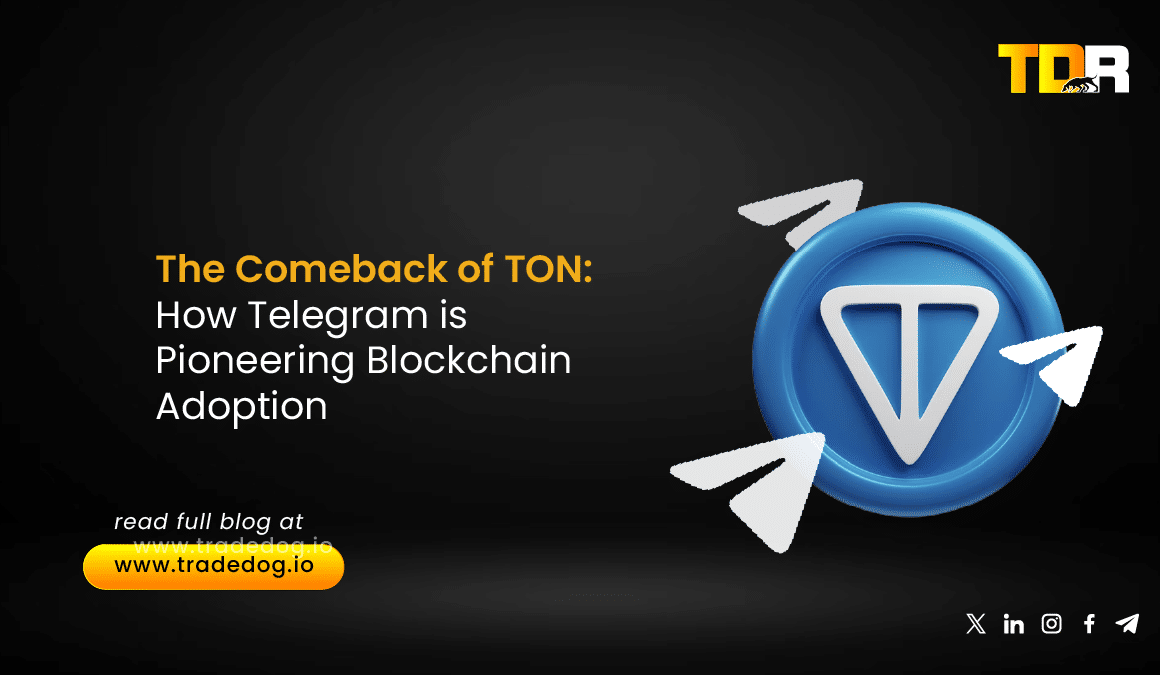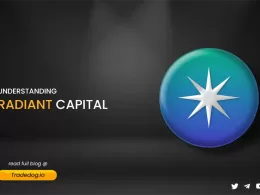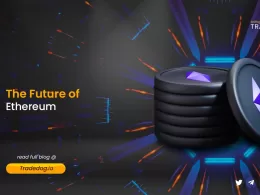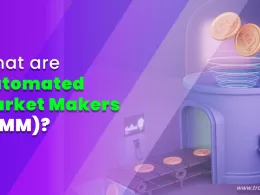Quick Links
Life is like a sine wave; a trough doesn’t mean that you can’t make it up to the crest. Consistency and perseverance do yield results, and the same can be seen in the story of Telegram and TON.
Early Success of Telegram
Back in 2017, crypto rode the first bull market trend in the true sense. Simultaneously, there was a noteworthy innovation sprouting its adoption: Telegram. It had already reached 200 million Monthly Active Users at an astonishing 54.6% CAGR over the past four years (2014-2018).

The Launch of TON and Fundraising
Telegram decided to launch its native token to raise funds. They started working on a new network called the Telegram Open Network (TON) or Gram to ensure enough bandwidth to withstand the influx of millions of users from the messenger.
Fundraising started in early 2018, and it could be argued as one of the most desirable investments of the year. By March 2018, a total of $1.7 billion had been raised, making it the largest ICO in history. The technology they were creating then resembles today’s high-performance modular blockchain. It had features such as dynamic sharding, “tight-coupling” for blockchain interoperability, and multichain networks to bring scale.
Legal Challenges and Setbacks
Then came the twist that nobody expected. In early October 2019, the TON team sent letters to investors announcing that the network would be launched later that month. However, it could not get launched because, on October 11th, the SEC filed a complaint in the Federal Court of Manhattan, accusing Telegram of violating securities law and illegally distributing unregistered digital tokens.
The SEC demanded the return of $1.7 billion to investors, along with an additional $18.5 million to be paid as a fine. After six months of litigation, Telegram reached a settlement with the SEC, promising to return all funds to investors and suspend support for TON.
Durov, the founder of Telegram, wrote an article titled “Why is TON over.” Reading it, you can feel the pain in his words.
Revival and Integration
As said, innovation can be delayed but not refrained. All of the TON code was released open source on GitHub, and the developer community decided to come together and finish it. It moved into a full mainnet in 2021.
The TON Foundation was founded, and by 2022, TON was a working Layer 1, which can be considered the fastest and most efficient blockchain architecture but now without Telegram.
The Marriage of Telegram and TON
Telegram had TG Bots since 2015, and in 2022, Durov introduced TG Web & Mini Apps. Essentially, this enabled the launch of mini-applications within Telegram itself using Javascript (the most loved programming language of developers). This made development significantly easier, leading to projects like Notcoin and Hamster Kombat capitalizing on this opportunity and leveraging Telegram’s user base to drive growth.
Now, TON again popped up into the picture wherein Telegram integrated the TON Blockchain into its infrastructure. This meant Telegram’s 900 million Monthly Active Users would be utilizing TON for all blockchain transactions.
The Open Platform, a major builder in the TON blockchain ecosystem, has built the native TON wallet as a Telegram Mini App, simplifying onboarding and offering a native app experience. The wallet features in the Telegram menu, any TG app can connect with it, and it only requires an email and Telegram backup, eliminating the need to secure seed phrases that many people dislike.
Closing Thoughts
This is a remarkable approach towards mass adoption. Telegram brings its messenger and 900 million active user base empowered with Mini Apps functionality, allowing anybody to build their applications within it. At the same time, TON provides its highly scalable decentralized infrastructure to manage the infrastructure load.
This could bring unparalleled traction to TON. Essentially, it means approximately 10% of the world’s population can be onboarded onto Web3 through Telegram. This is HUGE!!









